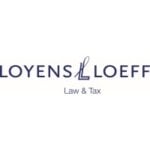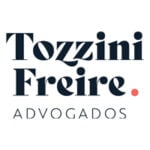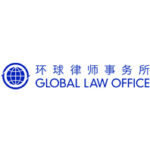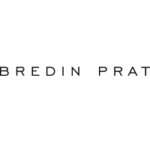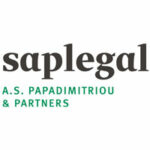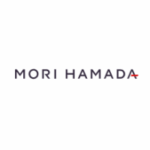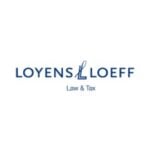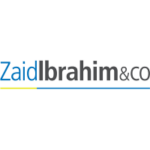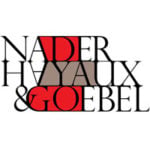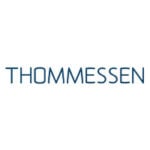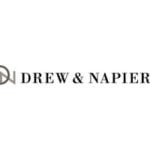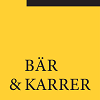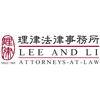-
What proportion of transactions have involved a financial sponsor as a buyer or seller in the jurisdiction over the last 24 months?
The total investments from private equity and venture capital in the Middle East in 2024 have fallen significantly behind the $11.60 billion recorded in 2023, likely due to ongoing military conflicts.
However, throughout the course of 2024, there has been an uptick in transactional activity as the year progresses, focusing on sectors beyond oil and gas which shows a diversification of investment strategy from financial sponsors.
Spanning 12 countries, including the oil-abundant nations of Saudi Arabia, the United Arab Emirates, and Iran, the region garnered investments worth $2.28 billion as at the end of the third quarter, as per data from S&P Global Market Intelligence. This figure slightly surpasses the second quarter’s total investment of $2.16 billion and is almost twice the amount of the first quarter’s $1.19 billion, which shows a positive upward trend.
Despite this uptick, over the last 24 months, conventional private equity transactions have continued to comprise a relatively small proportion of M&A deals in the UAE (according to Mergermarket data). Domestic and inbound M&A activity continues to be primarily driven by sovereign wealth funds, family offices, government-related entities, institutional investors and trade.
-
What are the main differences in M&A transaction terms between acquiring a business from a trade seller and financial sponsor backed company in your jurisdiction?
Upon an exit, the aim of a financial sponsor seller would typically be to achieve a “clean break” to enable a distribution of sale proceeds to the fund as soon as possible. Accordingly, a financial sponsor would generally seek to implement a locked box purchase price mechanism in order to achieve price certainty rather than a completion accounts mechanism, which would involve a potential purchase price adjustment and may result in a hold back of proceeds. Please see the comments at paragraph 5 on the use of locked box purchase price mechanisms in the UAE. Furthermore, a financial sponsor typically seeks to limit the warranties contained in the sale and purchase agreement to fundamental title and capacity warranties only. However, it is becoming increasingly common for W&I insurance to be used in order to provide recourse to the buyer for any breach of business warranties.
On the other hand, trade sellers in the UAE (by their nature) are less experienced in M&A transactions, and therefore tend to be less comfortable using locked box purchase price mechanics on an exit. Furthermore, trade sellers in the UAE are more likely to be willing to bear risk in relation to the target and to stand behind business warranties (subject to standard disclosure qualifications and limitations on liability) although we have seen an increasing number of trade sellers looking to benefit from W&I insurance.
As a general rule, financial sponsors are also more focused on limiting conditions precedent to completion as far as possible whereas trade sellers may be more amenable to including more fulsome CPs (e.g. a material adverse change CP).
In the UAE, the difference between M&A transactions involving financial sponsor backed companies and trade sellers is less marked than in other jurisdictions and there is still an expectation in the UAE that financial sponsors offer a level of protection and coverage to buyers that is not always offered or required in other jurisdictions.
-
On an acquisition of shares, what is the process for effecting the transfer of the shares and are transfer taxes payable?
A transaction involving a UAE company will (where relevant) typically require competent authority approval in respect of the application in relation to a transfer of shares. Limited liability companies, which are the most common form of company through which business activities are performed “onshore” in the UAE, are licensed and regulated by the local economic department of the Emirate in which they are established. Local economic departments are responsible for maintaining the Commercial Register, and their procedural requirements must be satisfied in order for a person to be registered as a legal shareholder (noting that their requirements can change so it is important to get up to date information as to current processes). Similarly, free zone companies are regulated by the relevant authority of the free zone in which they are established.
Furthermore, in order to effect an “onshore” share transfer (and certain free zone share transfers also), shareholders are required to use a notary public in order to sign (although this process is increasingly being conducted remotely by way of a video call) and have the relevant documentation and an updated memorandum of association notarised before they are submitted to the competent authority. Effecting a share transfer of a UAE “onshore” company, therefore, generally requires the cooperation of all shareholders. It is important for buyers and sellers to note that due to the requirements to have documents notarized, there may also be a need to have certain buyer and seller constitutional documentation notarized and attested in the relevant country of origin which could add several weeks to the share transfer process – therefore this added delay should be factored into the overall transactional timeline (and the same applies to free zone transfers referred to below).
In certain Emirates (e.g. Abu Dhabi), advertisement of summary details of any proposed share transfer is a mandatory step in the share transfer process. However, such advertisement is usually in the public Gazette which is not widely read or reported on.
There is currently no general transfer tax applicable to transfers of shares in the UAE. Competent authority registration fees will apply and, in respect of transfer of shares in “onshore” companies, notarial fees will also apply, however such fees are not material. Notary public fees in Dubai are specified by the Dubai Court to be 0.5% of the value of the shares being transferred, subject to a cap. It is market practice to assess value on the basis of the nominal value of the shares being transferred. Whilst a sponsor would typically acquire shares in a holding vehicle incorporated in the Dubai International Financial Centre or Abu Dhabi Global Market, it may be necessary to transfer an “onshore” operating company under such vehicle.
Moreover, where a company owns an interest in land onshore in Dubai (whether directly or indirectly through subsidiaries), and the shares in this company are transferred to a third party, the Dubai Land Department views this transfer as a transfer of a real estate interest upon which registration fees of 4% of the value for freehold or usufruct (long leasehold) properties will be assessed. There is also a risk that other Emirates will apply this procedure.
-
How do financial sponsors provide comfort to sellers where the purchasing entity is a special purpose vehicle?
Financial sponsors would typically acquire shares in a target company through a special purpose vehicle. Certainty of funding would usually be evidenced to sellers by way of provision at signing by the financial sponsor of an equity commitment letter (representing a commitment to provide subscription monies for shares in the special purpose vehicle) in respect of the equity funded component of the purchase price. The equity commitment letter may also provide comfort around debt facilities available and their draw-down although leveraged deals are less common in this region.
A conditional debt commitment letter (attaching a term sheet or draft facility agreement) from lenders may also be delivered in respect of the debt funded component of the purchase price – although this is less common in practice.
-
How prevalent is the use of locked box pricing mechanisms in your jurisdiction and in what circumstances are these ordinarily seen?
On a buy-side transaction, private equity sponsors would typically seek a closing accounts purchase price adjustment mechanism. However, UAE private equity buy-side transactions are often in the context of competitive auction sales involving a locked box mechanism.
On an exit, typically a locked box purchase price mechanism would be sought in order to achieve price certainty and facilitate a prompt return of proceeds to the fund, rather than having to wait for a potential adjustment. However, to date, there are only a limited number of private equity exit precedents in the UAE and therefore market practice is still evolving.
Counterparties in UAE transactions are often regional trade sellers or buyers (private equity secondary market sales in the UAE are not common). Such counterparties may lack experience of using locked box purchase price mechanics. For this reason and others (such as lower quality of earnings/accounting when compared to other jurisdictions) locked box mechanisms are not as prevalent in the UAE when compared to other jurisdictions.
-
What are the typical methods and constructs of how risk is allocated between a buyer and seller?
On balance, UAE transactions involving international private equity investors (on the buyside), tend to be on more buyer friendly terms. Having said that, risk allocation is always a matter of particular negotiation and is deal-specific, in particularly in the context of a competitive bid process and the attractiveness of a particular asset.
On a locked-box transaction, a buyer assumes economic risk from the locked-box date (subject to leakage protection). Private equity buyers seek to manage risk through conducting due diligence and negotiating warranty protection from the seller. It is customary for the contents of the data room to qualify the warranties, to the extent matters are fairly disclosed. Tax covenants, pursuant to which a seller agrees to be responsible for all pre-completion tax liabilities of the target group, are increasingly common in UAE deals, particularly with the introduction of corporate tax in the UAE.
As is consistent with other markets, a private equity sellers’ starting position is typically to refuse the giving of warranties to a buyer beyond customary title to the sale shares and capacity to enter into definitive transaction documentation. However, in practice, sponsors sometimes need to provide some level of warranty coverage on an exit in the UAE, but in this situation we would expect the limitations and recourse provisions to be very prescriptive and heavily negotiated. W&I insurance is commonly used to bridge any gap between these limited warranties and those required by the buyer.
Earn-outs are relatively common in the UAE, particularly in relation to founder-owned businesses which helps balance the risk for an incoming investor.
-
How prevalent is the use of W&I insurance in your transactions?
There has been a significant increase in the use of W&I on M&A transactions in the region.
W&I is now fairly common in transactions involving an international privative equity sponsor or other sophisticated buyers – it is certainly raised or considered as an option on almost all such transactions. For a private equity seller in the UAE, the use of warranty and indemnity insurance is the preferred option to bridge the gap between a sponsor’s unwillingness to give, and a buyer’s insistence to receive, business warranty protection.
-
How active have financial sponsors been in acquiring publicly listed companies?
There is limited precedent of a financial sponsor acquiring a publicly listed company in the UAE, with the largest private equity backed investments involving private companies such as Olayan Financing investment into ICD Brookfield Place. Public M&A activity in the UAE has historically been limited, in part due to the ownership structure of UAE listed companies which often involves significant interests being held by UAE governments.
-
Outside of anti-trust and heavily regulated sectors, are there any foreign investment controls or other governmental consents which are typically required to be made by financial sponsors?
A common cross-border consideration in the UAE is foreign ownership restrictions. Previously, UAE legislation mandated that for a company established ‘onshore’ (outside of a free zone), at least 51% of its capital had to be owned by UAE nationals, barring certain exemptions. However, in 2021, the UAE significantly eased these restrictions on foreign direct investment. Now, a company in the UAE can be entirely owned by foreign nationals, except in specific and limited sectors where foreign ownership remains restricted.
Additionally, Federal Decree-Law No. (26) of 2024 has cancelled Federal Law No. 17/2004 concerning Combating Commercial Concealment (the Anti-Fronting Law), with effect from 1 October 2024. However, where a UAE local partner is required, a sponsor should consider putting in place certain customary ‘nominee’ arrangements that effectively vest legal and economic control over the business with the sponsor.
Furthermore, any foreign company acquiring shares in a company that owns real estate interests (whether directly or indirectly through subsidiaries) should be aware that all of the Emirates have rules around foreign ownership of real estate interests (subject to certain ‘designated areas’ where foreign ownership is permitted) and that any foreign ownership, anywhere in the corporate chain (including any foreign entities in the ownership chain), may result in the company being deemed foreign for the purposes of such rules.
As stated at paragraph 3, a transaction involving a UAE business will (where relevant) typically require competent authority approval in respect of an application in relation to the transfer or issuance of shares.
Note further that with the introduction of UBO registers in the UAE, all regulatory authorities are now requiring clear and detailed information in relation to a corporate group’s ultimate shareholding which may involve requesting passport copies of controlling individuals (at both shareholder and board level) although these typically remain private and are not publicly available.
-
How is the risk of merger clearance normally dealt with where a financial sponsor is the acquirer?
The UAE introduced Federal Decree-Law No. 36/2023, significantly reshaping its competition regulations. This law affects businesses within the UAE, with implementing regulations expected to be issued in June 2024. However, as at the date of this article, we are not aware of the implementing regulations having been issued.
The law revises merger controls, requiring notifications for transactions that could lead to market dominance. It introduces an ‘annual turnover’ threshold alongside the existing ‘market share’ threshold, necessitating more transactions to undergo merger control filing. Notifications now must be submitted at least 90 days before transaction completion, with an option for businesses to propose measures to mitigate anti-competitive effects within 30 days of filing. The ministry can solicit feedback from interested parties and has 90 days, extendable by 45 days, to make a decision. A lack of decision within this timeframe implies rejection, a change from the previous acceptance by default.
The new law limits exemptions for small and medium-sized enterprises (SMEs) and specific sectors, now subject to competition law unless specifically exempted by sector regulators. It also tightens regulations around anti-competitive agreements and practices, expanding the list of prohibited activities to include exploitative practices and predatory pricing, aiming to prevent market exclusion strategies.
This streamlined law marks a significant shift towards stricter competition regulation and transparency in the UAE, impacting a broad spectrum of businesses and transactions. However, as with the old regime, how the new regime applies in practice remains to be seen.
-
Have you seen an increase in (A) the number of minority investments undertaken by financial sponsors and are they typically structured as equity investments with certain minority protections or as debt-like investments with rights to participate in the equity upside; and (B) ‘continuation fund’ transactions where a financial sponsor divests one or more portfolio companies to funds managed by the same sponsor?
We have recently seen more “structured equity” type investments in the UAE, where sponsors participate in the capital stack by way of preferred equity or equity-linked debt type instruments which rank ahead of ordinary shares but are subordinate to senior debt. Such participation typically involves the right to a minimum fixed rate of preferred return and the potential for additional equity upside. For a sponsor, this provides more certainty around achieving an exit (through a redemption or repayment mechanism) and for other shareholders, enables retention of control. The financial free zones, namely DIFC and ADGM, allow for more complex share class and shareholding structures than the UAE’s “onshore” regime which allow financial sponsors and foreign investors to mirror the arrangements they are more familiar with implementing other offshore jurisdictions (e.g. Cayman Islands, BVI, Jersey, etc.).
Minority investments are more common in the venture capital space, in relation to which a range of capital structures feature, including preferred equity and debt instruments, the latter held by mezzanine debt funds who may require an equity kicker to reach the desired IRR.
-
How are management incentive schemes typically structured?
Management incentive schemes involving the issuance of ‘hard’ equity to members of the management team are less common in the UAE than in many other jurisdictions. The main driver behind this is that, given the current tax landscape in the UAE with no income or capital gains tax payable by individuals, there is no tax advantage for management in holding shares. Consequently, considerations around equity appreciation being taxed at capital gains tax rates (rather than employment income tax rates) is not applicable in the UAE. Please note that no change to the tax regime applying to individuals is currently envisaged and so we do not expect the general approach to ‘hard’ equity changing in the near future.
In addition, in circumstances where an investment structure does not include a DIFC or ADGM ‘holdco’, there are practical considerations that render the establishment of ‘hard’ equity management incentive schemes challenging:
- Share classes – “onshore” companies cannot issue different classes of shares with bespoke rights attached to each class. As a result, it is very difficult to have a ‘management’ class of shares.
- Share transfers and other corporate actions – in order to effect an “onshore” share transfer or undertake certain other corporate actions (e.g. amending the constitutional documents), all shareholders are required to attend a notary public in order to sign and have the relevant documentation and an updated memorandum of association notarised before they are submitted to the relevant authorities. The reliance on all shareholders being present or agreeing to the relevant action increases the risk that an exiting manager may frustrate certain actions, including the transfer to the company or another shareholder of any shares issued as part of a management incentive plan. It also means that the enforceability of ‘drag-along’ and ‘tag-along’ provisions (both legally and practically) is extremely questionable.
The combination of the tax considerations and practical difficulties set out above mean that contractual ‘phantom’ equity, option or profit-sharing schemes are more common in the UAE, particularly outside of the financial free zones.
Note that due to inheritance issues and Islamic Shari’a jurisprudence, it is recommended that shares are held through corporate vehicles rather than directly by individual shareholders.
-
Are there any specific tax rules which commonly feature in the structuring of management's incentive schemes?
See paragraph 12 for commentary on tax considerations relating to management incentive schemes in the UAE.
-
Are senior managers subject to non-competes and if so what is the general duration?
Typically, senior managers are subject to non-compete restrictions in their employment contracts of around six to nine months, sometimes 12 months. In the UAE (outside of the DIFC), the duration of a non-compete clause is limited by law to two years, however historically, courts have been generally reluctant to enforce non-compete restrictions that are longer than six to 12 months depending on the level of seniority of the relevant individual and the amount of confidential and sensitive information that person is in possession of.
-
How does a financial sponsor typically ensure it has control over material business decisions made by the portfolio company and what are the typical documents used to regulate the governance of the portfolio company?
In the UAE, governance provisions are typical of those in other jurisdictions and usually include:
- Board representation – investors will nearly always have a right to appoint a number of investor directors with at least one investor director required to be present for a quorum to exist at any board meeting.
- Reserved matters – investors (and other significant shareholders) will nearly always have a list of reserved matters requiring their consent.
- Business plan and annual budget – in most investments, the management team is typically expected to prepare an annual business plan and budget for the portfolio company for approval by the board with the consent of the investor. Management teams are often required to report to the investor on progress as against the business plan and budget on a quarterly or half-yearly basis.
- Delegation of authority / authority matrix – it is common in the region for there to be a delegation of authority or authority matrix established at the outset of an investment setting out the matters that the management team can carry out without the consent of the investor or the board.
- Reporting requirements – customary reporting requirements are usually included in the transaction documents to ensure that the management team provides the investor with copies of relevant financial information, such as management accounts, quarterly reports and audited accounts, within a specified time period. In line with global trends, there has also been a rise in interest and requirements for non-financial ESG reporting to private equity investors.
-
Is it common to use management pooling vehicles where there are a large number of employee shareholders?
For the reasons stated at paragraph 12, the issuance of ‘hard’ equity to employees less common in the UAE than in many other jurisdictions. Accordingly, the use of management pooling vehicles is less common in the UAE.
-
What are the most commonly used debt finance capital structures across small, medium and large financings?
Leveraged acquisitions can be financed in a number of ways, including through a combination of senior and mezzanine facilities, and the debt capital markets. In the UAE the most commonly used structure remains through senior banking facilities, whether on a syndicated or bilateral basis depending on the size of the financing. Whilst we have seen mezzanine facilities coming in subordinated to the senior lenders, that is not the norm, and it is still relatively unusual to see debt financings with a second lien tranche sharing on the same security as the senior lenders. Even for banks and financial institutions it may be difficult get acquisition financings through their credit committees. One reason for this, is that acquisition financings are seen by banks as complex transactions requiring oversight by the banks’ investment banking teams. At the same time, investment banking teams usually require minimum financings of about $100 million in order to get involved. In the region, however, the majority of private equity led acquisitions are relatively small, leaving a substantial amount of buyouts financed exclusively with equity. We sometimes do see a workaround implemented by banks in the region, in particular where the target is an existing client of the bank – banks may sometimes provide financing at the target level the proceeds of which may be used to pay the seller of the target. This vacuum in the market for bank financed small and midsized acquisitions has also created an opportunity for credit funds to fill in the gap.
-
Is financial assistance legislation applicable to debt financing arrangements? If so, how is that normally dealt with?
Article 224 of the 2021 Federal Law By Decree No. 32 of 2021 on Commercial Companies states thar neither a company nor its subsidiaries may provide financial aid to any shareholder to enable him to own shares, bonds or Sukuk issued by the company. Financial assistance is widely defined under Article 224 and includes providing (i) loans; (ii) gifts or donations; (iii) providing security over the assets of the company; and (iv) providing security or guarantee in respect of third party obligations.
-
For a typical financing, is there a standard form of credit agreement used which is then negotiated and typically how material is the level of negotiation?
The Loan Market Association precedent for leveraged acquisitions remains the standard form of credit agreement preferred by both banks and financial institutions and credit funds alike. However, there may be variations to it if the financing is Shari’a compliant. Equally, where notes or sukuk (usually privately placed) are used, then there is no real industry standard as such.
-
What have been the key areas of negotiation between borrowers and lenders in the last two years?
Equity cures are quite heavily negotiated. An equity cure gives the sponsor the ability to “cure” a financial covenant breach by injecting additional funds into the borrower. Clearly borrowers and sponsors like to have the flexibility to cure financial covenants breaches as often as necessary. Lenders will want to ensure that equity cures are not used excessively and in particular are not used in consecutive test periods. We note that one of the main reasons for having financial covenants is to give lenders the ability to accelerate the facility long before the borrower becomes unable to service debt. Allowing sponsors to cure financial covenants in consecutive periods essentially takes away from that lender discretion to accelerate if there are clear signs that the borrower is in financial trouble. Lenders must also consider that there can be quite a lag until financial covenants can be tested by reference to the audited financials – it is not uncommon in the UAE that borrowers get 180 days after the end of a financial year to produce audited financial statements. If you add consecutive equity cures, the problem compounds and lenders may find that their right to accelerate the facility is only triggered once the company is in deep financial troubles. There is usually an overall limit to the amount of cures which can be exercised during the tenor of the facility. Another contentious point on the equity cure is on what basis are financial covenants recalculated once the funds are injected into the borrower (usually by way of subordinated new shareholder loans). Borrowers have typically argued that the new cash injection should be added to the EBITDA side of the leverage ratio. Lenders, on the other hand, will want the new shareholder injections to be applied to reduce debt.
Another point of contention between lenders and borrowers is the transfer provisions. Borrowers in the region like to rely on personal relationships developed with their lenders. Their view is that their relationship bakers or private lending connections will always make an effort to extend maturities in the event that the borrower runs into financial difficulties which is why they want to know that the lender will not sell down the debt. Similarly, reaching an agreement on a restructuring with distress debt funds purchasing debt in the secondary markets will typically be more difficult than with local banks and financial institutions. On the other hand, lenders tend to assure borrowers that they do not intend to sell down or transfer their participations in the loan, whilst at the same time insisting on an unrestricted ability to do so. Borrowers are often also concerned about confidentiality and competitors purchasing debt in the secondary markets in order to benefit from the information covenants in favour of the syndicate banks. It is therefore not uncommon to see restrictions on transfers of participations to competitors of the borrower.
-
Have you seen an increase or use of private equity credit funds as sources of debt capital?
See question 17 – the shortage in available banking finance for small to medium size deals has created opportunities for private credit funds. Many of the active credit funds in the region target transactions between $15 million to $50 million. Depending on the size and risk involved in the financing, it is not unusual to see two or three credit funds club together for a deal. They will also have their own individual requirements in terms of pricing, payment in kind and equity kickers as well as whether the financing needs to be Sharia’ compliant or conventional or made through a liquid instrument such as cleared notes.
United Arab Emirates: Private Equity
This country-specific Q&A provides an overview of Private Equity laws and regulations applicable in United Arab Emirates.
-
What proportion of transactions have involved a financial sponsor as a buyer or seller in the jurisdiction over the last 24 months?
-
What are the main differences in M&A transaction terms between acquiring a business from a trade seller and financial sponsor backed company in your jurisdiction?
-
On an acquisition of shares, what is the process for effecting the transfer of the shares and are transfer taxes payable?
-
How do financial sponsors provide comfort to sellers where the purchasing entity is a special purpose vehicle?
-
How prevalent is the use of locked box pricing mechanisms in your jurisdiction and in what circumstances are these ordinarily seen?
-
What are the typical methods and constructs of how risk is allocated between a buyer and seller?
-
How prevalent is the use of W&I insurance in your transactions?
-
How active have financial sponsors been in acquiring publicly listed companies?
-
Outside of anti-trust and heavily regulated sectors, are there any foreign investment controls or other governmental consents which are typically required to be made by financial sponsors?
-
How is the risk of merger clearance normally dealt with where a financial sponsor is the acquirer?
-
Have you seen an increase in (A) the number of minority investments undertaken by financial sponsors and are they typically structured as equity investments with certain minority protections or as debt-like investments with rights to participate in the equity upside; and (B) ‘continuation fund’ transactions where a financial sponsor divests one or more portfolio companies to funds managed by the same sponsor?
-
How are management incentive schemes typically structured?
-
Are there any specific tax rules which commonly feature in the structuring of management's incentive schemes?
-
Are senior managers subject to non-competes and if so what is the general duration?
-
How does a financial sponsor typically ensure it has control over material business decisions made by the portfolio company and what are the typical documents used to regulate the governance of the portfolio company?
-
Is it common to use management pooling vehicles where there are a large number of employee shareholders?
-
What are the most commonly used debt finance capital structures across small, medium and large financings?
-
Is financial assistance legislation applicable to debt financing arrangements? If so, how is that normally dealt with?
-
For a typical financing, is there a standard form of credit agreement used which is then negotiated and typically how material is the level of negotiation?
-
What have been the key areas of negotiation between borrowers and lenders in the last two years?
-
Have you seen an increase or use of private equity credit funds as sources of debt capital?


